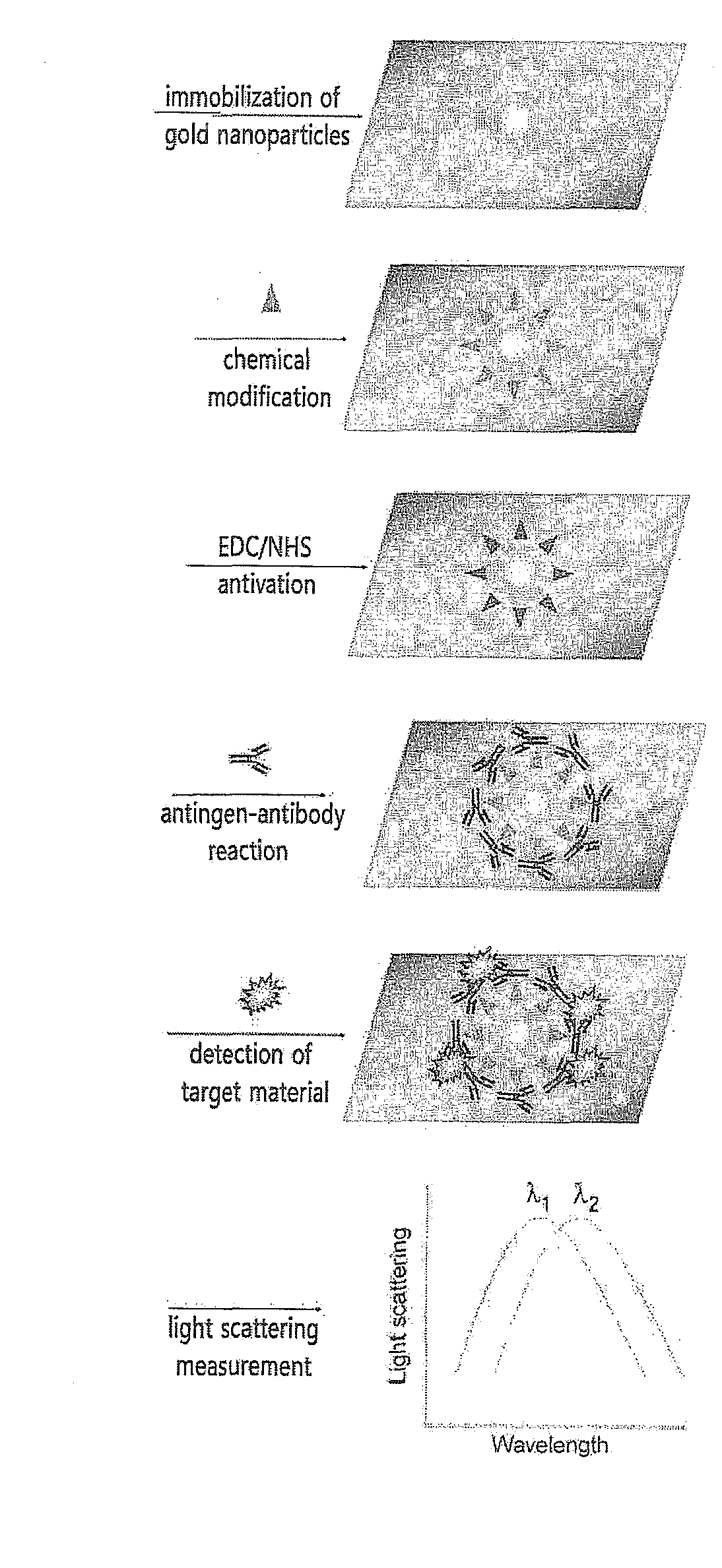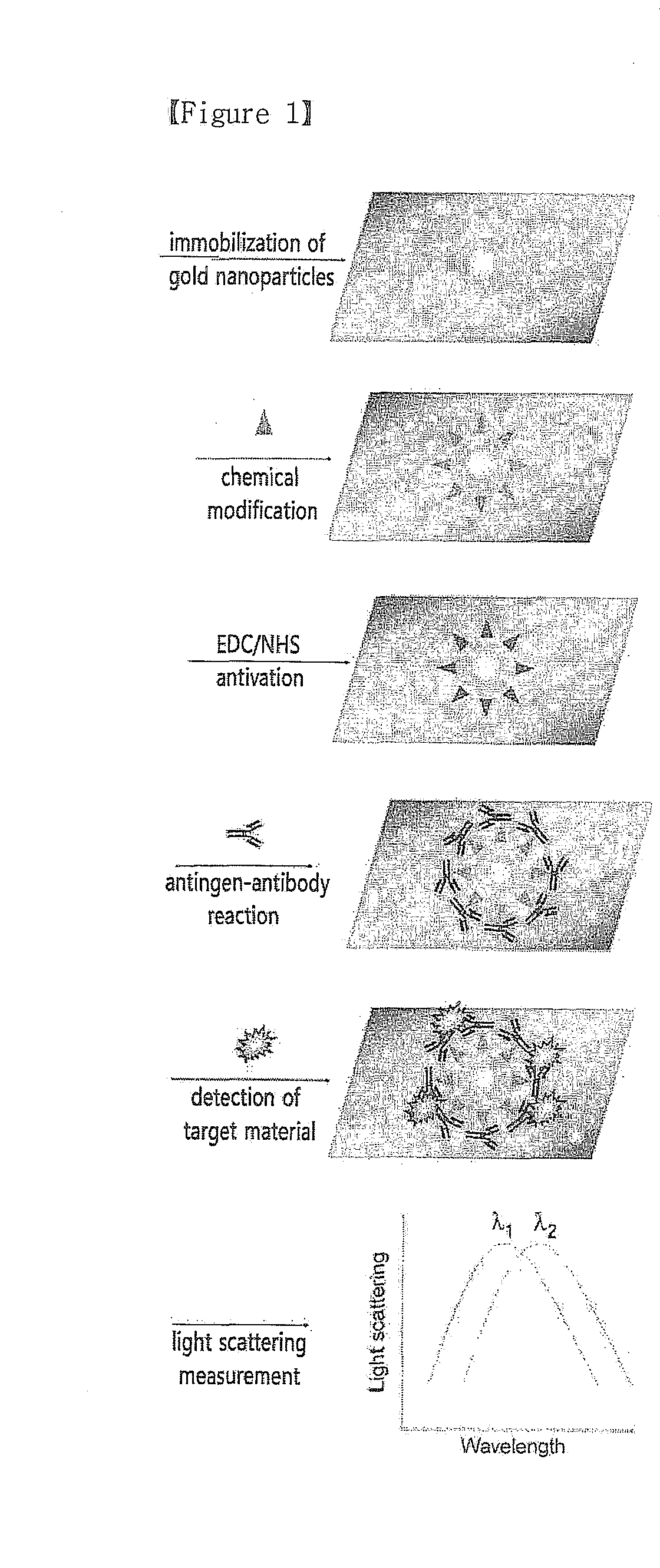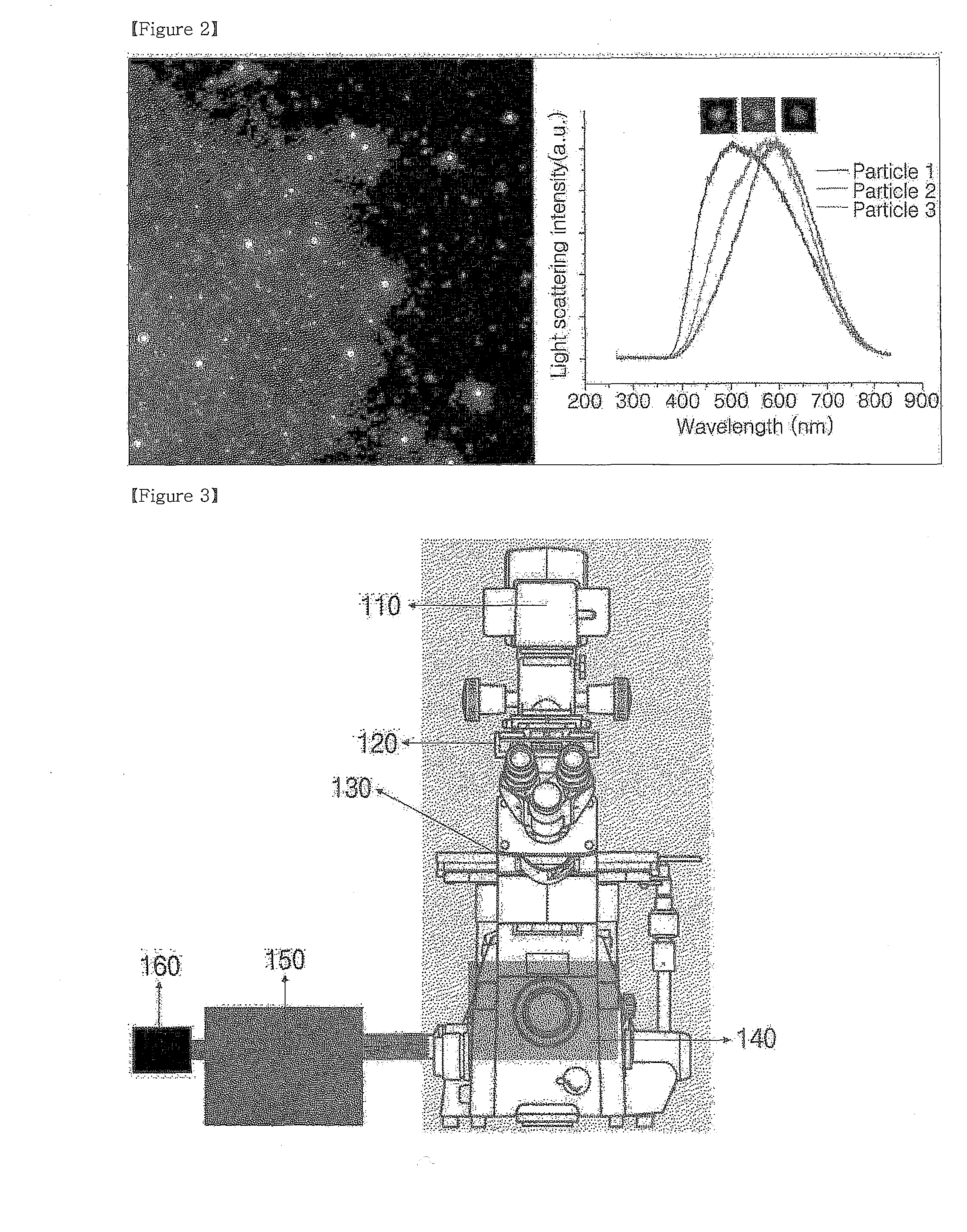Method of detecting bioproducts using localized surface plasmon resonance sensor of gold nanoparticles
a plasmon resonance and bioproduct technology, applied in the field of bioproduct detection, can solve the problems of poor reproducibility, two-dimensional electrophoresis, poor separation of alkaline protein and high molecular weight protein, etc., and achieve the effect of low price and high sensitivity
- Summary
- Abstract
- Description
- Claims
- Application Information
AI Technical Summary
Benefits of technology
Problems solved by technology
Method used
Image
Examples
example 1
[0032]Step 1: Preparation of Au Nanoparticles
[0033]Au nanoparticles were prepared by reducing a hydrogen tetrachloroaurate (HAuCl4) solution by using sodium citrate. To a 50 ml erlenmeyer flask, 20 ml of HAuCl4(1.0 mM) solution was added under heat while stirring, and to the boiling solution, 2 ml of 1% sodium citrate solution was added and stirred rapidly. After that, it was stirred about 30 minutes further, and then cooled at room temperature. As the reducing effect of citrate to gold(III), Au colloid was gradually formed. According to the above described method, prepared were Au nanoparticles in scarlet having an average particle size of about 21 nm.
[0034]After forming the colloidal solution, the Au nanoparticles were cultured in a mixed solution of 9 ml of Au solution and 1 ml of a mixed solution of HS-OEG6—COOH / HS-OEG3—OH at the mixing ratio of 1:10(v / v).
[0035]After mild stirring at room temperature for 6 hours, unreacted parts between the Au nanoparticles and ethylene glycol w...
PUM
 Login to View More
Login to View More Abstract
Description
Claims
Application Information
 Login to View More
Login to View More - R&D
- Intellectual Property
- Life Sciences
- Materials
- Tech Scout
- Unparalleled Data Quality
- Higher Quality Content
- 60% Fewer Hallucinations
Browse by: Latest US Patents, China's latest patents, Technical Efficacy Thesaurus, Application Domain, Technology Topic, Popular Technical Reports.
© 2025 PatSnap. All rights reserved.Legal|Privacy policy|Modern Slavery Act Transparency Statement|Sitemap|About US| Contact US: help@patsnap.com



